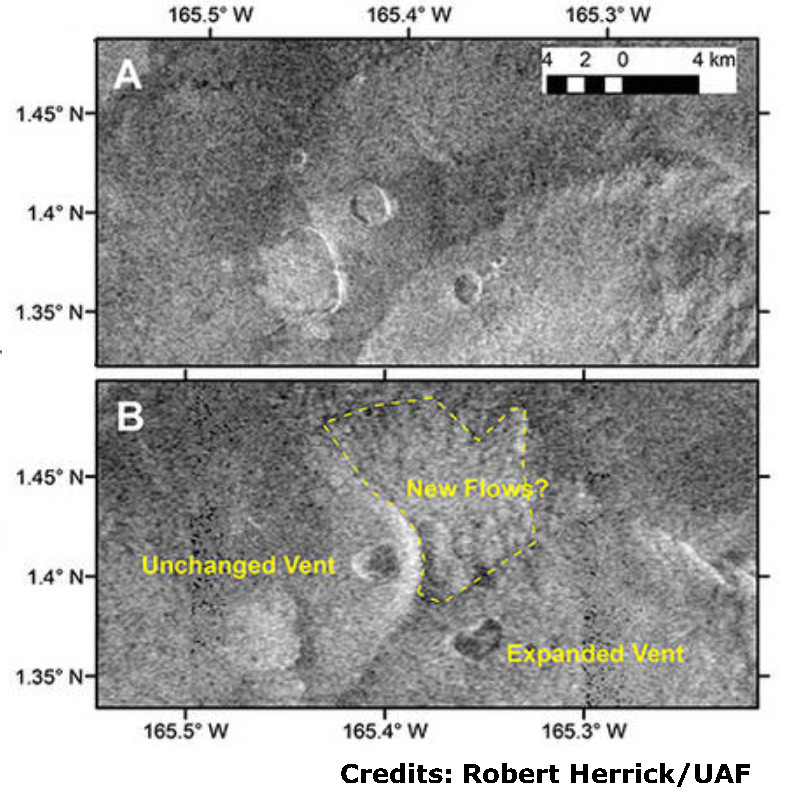2023 March 18
New evidence for Active Volcanism on Venus
Dr Paul G. Abel, Director, Mercury and Venus Section
Scientists believe they have found direct evidence of ongoing volcanism on the surface of Venus. Remarkably, the discovery was made by examining nearly 30-year-old archival radar image data from NASA’s Magellan space probe [1].
Lead-researcher Prof. Robert Herrick of the University of Alaska, Fairbanks, USA, spent more than 200 hours examining the data archive, which involved comparing images during successive Magellan sweeps of the planet. The scientists discovered a volcanic vent in the Maat Mons region that appeared to change shape over two months and increased in size in less than one year suggesting the eruption of lava beneath the vent. NASA’s proposed VERITAS mission will examine Venus to look for ongoing volcanic activity.
The Mercury and Venus Section has also been actively engaged in search for active volcanism on the planet. In 2019, former Director, Dr Richard McKim published a paper in the BAA Journal [2] which contained observations by Anthony Wesley and Philip Miles showing hot spots taken on the night side of the planet using a 1000‒1020 nm narrow-band IR filter. These spots seem to be absent in more recent observations of the same region, and suggested to the author that they may well be the result of active volcanoes.

Another phenomenon observed by Section members recently is the so-called cloud discontinuity ‒ a linear cloud feature extending north to south across Venus’s equator. Both Richard and myself reported on recent observations of this remarkable phenomenon in the latest issue of the Journal [3]. One explanation for it could be the upwelling of hot air caused by active volcanism.
Venus is currently well placed in the evening sky. I would encourage you all to make regular observations of the planet (both images and drawings are welcome!) so that we might continue to look for more observational evidence of active volcanicity. The Mercury and Venus Section meeting is being held at Winchester this year [4]. Clearly there will be much to discuss!
[1] NASA website: https://www.nasa.gov/feature/jpl/nasa-s-magellan-data-reveals-volcanic-activity-on-venus
[2] ‘The eastern & western elongations of Venus, 2007‒’17: Part II The nocturnal hemisphere’, McKim R.J., J. Brit. Astron. Assoc., Vol. 129 (3), 149‒157, 2019 June
[3] ‘Observations of another Venusian atmospheric discontinuity, 2022 May to September’, McKim R.J. & Abel P.G., J. Brit. Astron. Assoc., Vol. 133 (1), 23‒25, 2023 February
[4] BAA Winchester weekend: https://britastro.org/event/winchester2023
| The British Astronomical Association supports amateur astronomers around the UK and the rest of the world. Find out more about the BAA or join us. |
